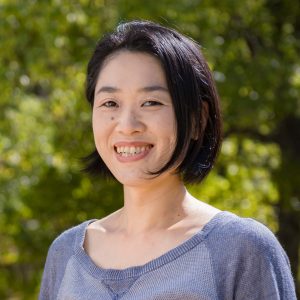Plant Cell Webinar: RNA Biology Part 1
Plant Cell Webinar: RNA Biology (1)
Celebrating the June 2023 Focus Issue on RNA Biology
Recorded Wednesday, June 14, 2023
About This Webinar
If DNA is the playbook of life, then RNA, in all its forms, is the company of actors that brings life into being. RNA is likely the original organic molecule that gave rise to DNA as well as enzymes and other proteins that create the flow of genetic information known as the central dogma (DNA -> RNA -> protein). Although the central dogma still holds true generally, our understanding has expanded the concept to encompass reverse transcription of RNA to DNA, regulatory functions of noncoding RNAs, and epigenetic modifications.
Focus Issue editors Mike Axtell, Andrea Barta, Xuemei Chen, Nan Eckardt, Brian Gregory, Hongwei Guo, Pablo Manavella, Blake Meyers, and Becky Mosher have organized two webinars to celebrate this topic. This first webinar features speakers Sachiko Toma-Fukai, Yingshan Li, and Collin Hudzik, who shared findings from their work appearing in this Focus Issue. The webinar is hosted by Plant Cell Guest Editor Pablo Manavella and moderated by Assistant Features Editor Sara Lopez-Gomollon.
SPEAKERS
 Sachiko Toma-Fukai: Structural insight into the activation of an Arabidopsis organellar C-to-U RNA editing enzyme by active site complementation
Sachiko Toma-Fukai: Structural insight into the activation of an Arabidopsis organellar C-to-U RNA editing enzyme by active site complementation
Sachiko Toma-Fukai is an Associate Professor in structural biology at the NARA Institute of Science and Technology in Japan. She earned her PhD in Macromolecular Science at Osaka University and was an Assistant Professor at The University of Tokyo before moving to Nara as an Associate Professor in 2018. Sachiko is especially interested in the molecular mechanisms of post-translational or post-transcriptional modifications of proteins relating to disease and therapeutic strategies to combat disease from the viewpoint of structural biology.
 Yingshan Li: Small RNAs >26 nt in length associate with AGO1 and are upregulated by nutrient deprivation in the alga Chlamydomonas
Yingshan Li: Small RNAs >26 nt in length associate with AGO1 and are upregulated by nutrient deprivation in the alga Chlamydomonas
Yingshan Li is an Associate Investigator at BGI Research in Shenzhen, China. He earned his Ph.D. in Genetics, Cellular & Molecular Biology, and M.S. in Computer Science, from the University of Nebraska-Lincoln after completing a B.S. in Biotechnology at Huazhong Agricultural University, China. Yingshan is interested in understanding the biogenesis and molecular functions of non-coding RNAs. During his Ph.D. training, he studied small RNAs in Chlamydomonas reinhardtii. Along with his mentors Drs. Heriberto Cerutti and Etsuko Moriyama, he discovered a novel type of small RNA in C. reinhardtii and showed that they likely play a role in stress responses. Yingshan’s training in computer science, especially bioinformatics, has greatly aided his biology research. In his position at BGI Research, he is interested in expanding the genetic code in eukaryotes using Saccharomyces cerevisiae as a model.
 Collin Hudzik: Trans-species microRNA loci in the parasitic plant Cuscuta campestris have a U6-like snRNA promoter
Collin Hudzik: Trans-species microRNA loci in the parasitic plant Cuscuta campestris have a U6-like snRNA promoter
Collin completed B.S. and M.S. degrees from Bridgewater State University, Massachusetts, and earned his Ph.D. in Biology at Penn State. Collin’s doctoral research focused on microRNAs in the parasitic plant dodder (Cuscuta campestris) that target mRNAs in tomato host plants. Dodder produces many microRNAs that specifically accumulate at the host-parasite interface, several of which have trans-species activity. These miRNAs can move from the parasite into the host where they disrupt the host defense response and other processes. Collin’s work identified a promoter element that distinguishes these interface miRNAs from other plant small RNAs. The authors speculate that this feature may be related to the ability of these miRNAs to be exported to host plants.
MODERATOR
Sara is a Broodbank Senior Research Fellow at the University of Cambridge (United Kingdom). She is interested in understanding how gene expression and genome stability are regulated by small RNAs. Recently, she has identified a regulatory mechanism that keeps endogenous pararetroviruses, or EPRV, under control. Pararetroviruses, such as Banana Streak Virus, infect many crop plants. After infection, they can remain “silent” in the plant genome until stress activates them, potentially leading to viral disease and plant death. Sara believes that a better understanding of their regulatory pathway will help us to understand how plants respond to stress and to develop sustainable strategies to prevent the associated viral disease in crops. Sara is actively involved in teaching and supervising students at the University of Cambridge. Also, the fact that many kids, especially young girls, think that they are less capable to do a career in STEM, drove her to become a STEM Ambassador, so she can raise the aspirations of children by working with local schools (@GomollonSara).
HOST
Pablo Manavella is an Associate Professor in the School of Biochemistry and Biotechnology at the Universidad Nacional del Litoral, Santa Fe (Argentina) and an independent Researcher at the National Research Council (CONICET). His work investigates the mechanisms regulating miRNA biogenesis in plants and explores the impact of heterochromatic siRNAs on genome structure, integrity, and evolution.
This webinar is freely available thanks to the support of the American Society of Plant Biologists.





